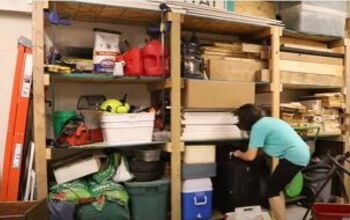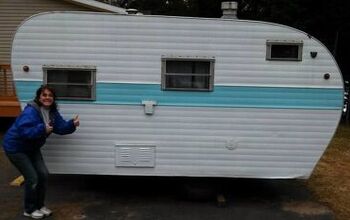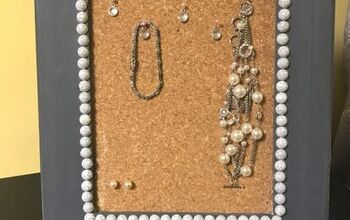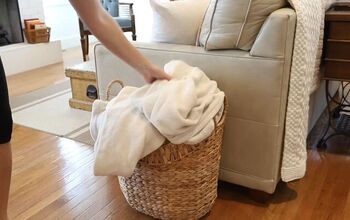The Top 6 Books on Decluttering & Their Main Points Summarized

We love to declutter, but with so many approaches and methods to choose from, the technique to choose can be almost as overwhelming as the clutter itself!
Should you go for The KonMari Method or try your hand at Swedish Death Cleaning? Declutter by category or by room? What about common decluttering challenges that come up like organizing important paperwork?
Here, we've collected the top 6 books on decluttering from the most organized minds around the world, and then summarized the main points, so you can figure out which style is best for you.
Plus, now you don't have to buy every book because... well... that would lead to more clutter!
Table of contents
- 1. The Life-Changing Magic of Tidying Up: The Japanese Art of Decluttering by Marie Kondo
- 2. Decluttering at the Speed of Life: Winning Your Never-Ending Battle with Stuff by Dana K. White
- 3. The Gentle Art of Swedish Death Cleaning: How to Free Yourself and Your Family from a Lifetime of
- 4. Let It Go: Downsizing Your Way to a Richer, Happier Life by Peter Walsh
- 5. Outer Order, Inner Calm: Decluttering and Organizing for Mental Peace by Gretchen Rubin
- 6. Messy Minimalism: Realistic Strategies for the Rest of Us by Rachelle Crawford
Disclaimer: Simplify may receive a small affiliate commission from purchases made via links in this article but at no cost to you.
1. The Life-Changing Magic of Tidying Up: The Japanese Art of Decluttering by Marie Kondo
Main points:
1. Does it spark joy? The KonMari Method, popularized by Marie Kondo, revolves around sparking joy. Instead of focusing on what to keep, Kondo encourages readers to hold each item and ask if it sparks joy. If not, thank the item for its service and discard it with gratitude. This emotional connection to our possessions helps us let go more easily.
2. Tidying by category: Kondo also emphasizes the importance of tidying by category, not location. This means gathering all your clothes, for example, from around the house and tackling them in one go. This method allows you to see the true volume of what you own and make more decisive choices.
3. Folding vertically: Finally, Kondo's signature folding techniques create a calming and space-saving storage system. Folding clothes vertically allows you to see everything at a glance and easily grab what you need, preventing clutter from accumulating again.
For Simplify readers' experiences with the KonMari method, read these posts:
- How to Clean & Declutter a Room Using the KonMari Method
- What is the Konmari Method of Tidying Up & Does It Work?
- A Marie Kondo Christmas: Decluttering Decor Using the KonMari Method
2. Decluttering at the Speed of Life: Winning Your Never-Ending Battle with Stuff by Dana K. White
Main Points:
1. Small, manageable steps: Author Dana K. White understands the struggle of chronic disorganization. She acknowledges that some people feel overwhelmed by the sheer volume of clutter in their homes, and getting started can be the hardest part. White's approach is kind and realistic, offering small, manageable steps to take on the decluttering challenge.
2. Container concept: A key concept in White's book is the "container concept." Instead of focusing on the overwhelming task of decluttering an entire room, White suggests focusing on a single container, such as a drawer or shelf. Fill the container with your favorite items first, then let go of anything that doesn't fit or spark joy. This method allows for small victories and keeps the process from feeling insurmountable.
3. Declutter in short, 15-minute bursts: White also emphasizes the importance of decluttering in short bursts rather than trying to tackle everything at once. Taking 15 minutes a day can lead to significant progress over time.
3. The Gentle Art of Swedish Death Cleaning: How to Free Yourself and Your Family from a Lifetime of
Main Points:
1. Döstädning: Inspired by the Swedish tradition of "döstädning" (death cleaning), this book encourages taking a proactive approach to decluttering throughout life. The idea is to gradually sort through your belongings and discard anything that is no longer needed or used. This can be sentimental items, old clothes, or unused kitchen gadgets. By decluttering throughout your life, you ensure that your loved ones aren't burdened with the task after you're gone.
2. Compassion: The book also emphasizes the importance of approaching death cleaning with grace and compassion. It's not about harshly criticizing yourself for accumulating possessions, but rather about finding peace in letting go and creating a legacy of clear, organized spaces for future generations.
3. Cathartic reflection: Death cleaning can also be a cathartic process, allowing you to reflect on your life and the memories associated with certain items.
For Simplify readers' experiences with Swedish Death Cleaning, read these posts:
- Swedish Death Cleaning Method: Why You Need To Do It
- Which is Better: Swedish Death Cleaning or Decluttering?
- What is Swedish Death Cleaning & How Does It Work?
4. Let It Go: Downsizing Your Way to a Richer, Happier Life by Peter Walsh
Main Points:
1. Gently cutting emotional ties: Professional organizer Peter Walsh dives deep into the emotional attachments we form with our possessions. He acknowledges that letting go of clutter can be difficult because objects often hold sentimental value or represent memories. Walsh provides strategies for identifying and addressing these emotional ties so you can declutter with less guilt and resistance.
2. Memory box technique: One technique Walsh suggests is to create a "memory box" for cherished items that you can't bear to part with, but don't necessarily use in everyday life. This allows you to keep the memories alive without the clutter.
3. Replacement value concept: He also encourages readers to consider the concept of "replacement value." Instead of clinging to a broken appliance because of its sentimental value, consider how much joy a functioning replacement could bring. By acknowledging the practicality of decluttering and focusing on the potential for positive experiences, Walsh empowers readers to let go and create a life richer in experiences, not just stuff.
5. Outer Order, Inner Calm: Decluttering and Organizing for Mental Peace by Gretchen Rubin
Main Points:
Four personality types: Gretchen Rubin, known for her work on personality types in "The Four Tendencies," recognizes that a one-size-fits-all approach to decluttering doesn't work for everyone. In "Outer Order, Inner Calm," she tailors decluttering strategies to four personality types: Upholders, Questioners, Rebels, and Obligers.
- Upholders are self-disciplined and meet expectations easily. Rubin suggests they create clear systems and routines for decluttering.
- Questioners need a logical reason to declutter, so Rubin recommends focusing on the benefits, like saving time or money.
- Rebels resist external expectations, so Rubin suggests they declutter on their own terms, perhaps setting a challenge for themselves.
- Finally, Obligers struggle to meet their own expectations but thrive on meeting external ones.
Rubin suggests they partner with an accountability buddy or hire a professional organizer for support. By understanding your personality type, you can choose decluttering strategies that are more likely to be successful and create a sense of calm and accomplishment.
6. Messy Minimalism: Realistic Strategies for the Rest of Us by Rachelle Crawford
Main Points:
1. Realistic, practical solutions: Author Rachelle Crawford acknowledges that achieving a perfectly minimalist, picture-perfect home might not be realistic for everyone. Life is messy, and so are our homes sometimes. Instead of striving for unattainable ideals, Crawford offers practical strategies for decluttering and creating a functional, comfortable space that works for you and your family.
2. Progress > perfection: Crawford emphasizes the importance of focusing on progress over perfection. Don't get discouraged if your home doesn't look like something out of a magazine. Celebrate small victories and focus on creating systems that make decluttering and organization easier to maintain in the long run.
3. Common challenges: Her book offers tips for dealing with common challenges, like overflowing toy boxes or unmanageable paperwork. By embracing a more relaxed approach to minimalism, Crawford empowers readers to create a clutter-free environment that reflects their unique lifestyle.
Remember: The best decluttering book is the one that resonates with you. Explore these guides and find the approach that sparks joy (and a clutter-free future)!
The Best Books on Decluttering
Have you read any of the books listed above and if so, what did you think of them? Or do you have any more to add? In fact, should we start a Simplify book club? Let me know what you think in the comments below!

























Comments
Join the conversation